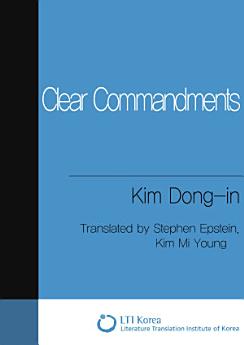Clear Commandments
2014 നവം · 20th Century Korean Literature പുസ്തകം, 26 · Literature Translation Institute of Korea
3.8star
5 അവലോകനങ്ങൾreport
ഇ-ബുക്ക്
11
പേജുകൾ
reportറേറ്റിംഗുകളും റിവ്യൂകളും പരിശോധിച്ചുറപ്പിച്ചതല്ല കൂടുതലറിയുക
ഈ ഇ-ബുക്കിനെക്കുറിച്ച്
In “Clear Commandments” (Myeongmun, 1925), a free play of imagination is on display in a story that in fact introduces God as an important character. The text begins in a realistic mode, as it explores familial strife between a son and his parents as a result of his conversion to Christianity. After death, however, the protagonist finds himself in a heavenly court, where he must justify a life based on self-righteous and self-serving interpretation of doctrine to a harshly critical and mocking Jehovah. In depicting a society in the midst of social ferment and intergenerational conflict, the story in many ways predicts Kim Dong-ni’s renowned “Portrait of a Shaman”, written a decade later, which also treats the collision of worldviews between a shaman mother and her Christian son.
റേറ്റിംഗുകളും റിവ്യൂകളും
3.8
5 റിവ്യൂകൾ
രചയിതാവിനെ കുറിച്ച്
Kim Dong-in (1900 – 1951), together with Yi Kwang-su, is one of early modern Korean literature’s representative writers of “pure” fiction. His debut work “The Sorrow of the Weak,” which appeared in the journal Changjo (Creation) in 1919, is considered the first Korean short story to focus in earnest on character development and psychological analysis. A clear, concise style is the hallmark of Kim’s writing. As the first author to adopt the plain past tense “-ieottda” style and to establish an objective stance in fiction with a third person point of view, he is regarded as having employed a realistic technique and well-rounded character types, in contrast to Yi Kwang-su, who saw literature as a vehicle for enlightenment and whose characters were more flatly drawn.
ഈ ഇ-ബുക്ക് റേറ്റ് ചെയ്യുക
നിങ്ങളുടെ അഭിപ്രായം ഞങ്ങളെ അറിയിക്കുക.
വായനാ വിവരങ്ങൾ
സ്മാർട്ട്ഫോണുകളും ടാബ്ലെറ്റുകളും
Android, iPad/iPhone എന്നിവയ്ക്കായി Google Play ബുക്സ് ആപ്പ് ഇൻസ്റ്റാൾ ചെയ്യുക. ഇത് നിങ്ങളുടെ അക്കൗണ്ടുമായി സ്വയമേവ സമന്വയിപ്പിക്കപ്പെടുകയും, എവിടെ ആയിരുന്നാലും ഓൺലൈനിൽ അല്ലെങ്കിൽ ഓഫ്ലൈനിൽ വായിക്കാൻ നിങ്ങളെ അനുവദിക്കുകയും ചെയ്യുന്നു.
ലാപ്ടോപ്പുകളും കമ്പ്യൂട്ടറുകളും
Google Play-യിൽ നിന്ന് വാങ്ങിയിട്ടുള്ള ഓഡിയോ ബുക്കുകൾ കമ്പ്യൂട്ടറിന്റെ വെബ് ബ്രൗസർ ഉപയോഗിച്ചുകൊണ്ട് വായിക്കാവുന്നതാണ്.
ഇ-റീഡറുകളും മറ്റ് ഉപകരണങ്ങളും
Kobo ഇ-റീഡറുകൾ പോലുള്ള ഇ-ഇങ്ക് ഉപകരണങ്ങളിൽ വായിക്കാൻ ഒരു ഫയൽ ഡൗൺലോഡ് ചെയ്ത് അത് നിങ്ങളുടെ ഉപകരണത്തിലേക്ക് കൈമാറേണ്ടതുണ്ട്. പിന്തുണയുള്ള ഇ-റീഡറുകളിലേക്ക് ഫയലുകൾ കൈമാറാൻ, സഹായ കേന്ദ്രത്തിലുള്ള വിശദമായ നിർദ്ദേശങ്ങൾ ഫോളോ ചെയ്യുക.











